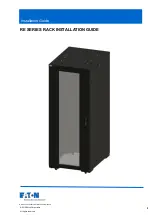
Fault isolation methodology 107
Basic steps
•
Gather fault information, including using system LEDs as described in
“Gather fault information” (page 108)
•
Determine where in the system the fault is occurring as described in
“Determine where the fault is occurring”
.
•
Review event logs as described in
“Review the event logs” (page 108)
•
If required, isolate the fault to a data path component or configuration as described in
.
Cabling systems to enable use of the licensed replication feature—to replicate volumes—is another important fault
isolation consideration pertaining to initial system installation. See
“Isolating replication faults” (page 110)
for
more information about troubleshooting during initial setup.
Options available for performing basic steps
When performing fault isolation and troubleshooting steps, select the option or options that best suit your site
environment. Use of any option (four options are described below) is not mutually exclusive to the use of another
option. You can use the SMC to check the health icons/values for the system and its components to ensure that
everything is okay, or to drill down to a problem component. If you discover a problem, either the SMC or the CLI
provide recommended-action text online. Options for performing basic steps are listed according to frequency of
use:
•
Use the SMC
•
Use the CLI
•
Monitor event notification
•
View the enclosure LEDs
Use the SMC
The SMC uses health icons to show OK, Degraded, Fault, or Unknown status for the system and its components.
The SMC enables you to monitor the health of the system and its components. If any component has a problem, the
system health will be Degraded, Fault, or Unknown. Use the web application’s GUI to drill down to find each
component that has a problem, and follow actions in the component Recommendation field to resolve the problem.
Use the CLI
As an alternative to using the SMC, you can run the CLI
show system
command to view the health of the system
and its components. If any component has a problem, the system health will be Degraded, Fault, or Unknown, and
those components will be listed as Unhealthy Components. Follow the recommended actions in the component
Health Recommendation field to resolve the problem.
Monitor event notification
With event notification configured and enabled, you can view event logs to monitor the health of the system and its
components. If a message tells you to check whether an event has been logged, or to view information about an
event in the log, you can do so using the SMC or the CLI. Using the SMC, you would view the event log and then
click on the event message to see detail about that event. Using the CLI, you would run the
show events detail
command (with additional parameters to filter the output) to see the detail for an event.
View the enclosure LEDs
You can view the LEDs on the hardware (while referring to LED descriptions for your enclosure model) to identify
component status. If a problem prevents access to the SMC or the CLI, this is the only option available. However,
monitoring/management is often done at a management console using storage management interfaces, rather than
relying on line-of-sight to LEDs of racked hardware components.
















































